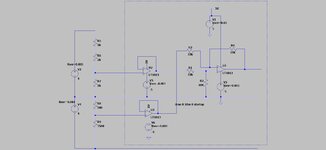cupoftea
Advanced Member level 5
Hi,
If we have an opamp with 0v and +5V supply, then its common mode voltage is +2.5V, and so the Common mode rejection ratio will be max for signals near 2.5V?
If we have an opamp with +5V and -5V supply, then its common mode voltage is 0V , and common mode rejection ratio will be greater for signals near 0V?
If its an InAmp with 0V and +5V supply, then the CM rejection ratio is the same no matter where the signal is between 0V and +5V?
If we have an opamp with 0v and +5V supply, then its common mode voltage is +2.5V, and so the Common mode rejection ratio will be max for signals near 2.5V?
If we have an opamp with +5V and -5V supply, then its common mode voltage is 0V , and common mode rejection ratio will be greater for signals near 0V?
If its an InAmp with 0V and +5V supply, then the CM rejection ratio is the same no matter where the signal is between 0V and +5V?
